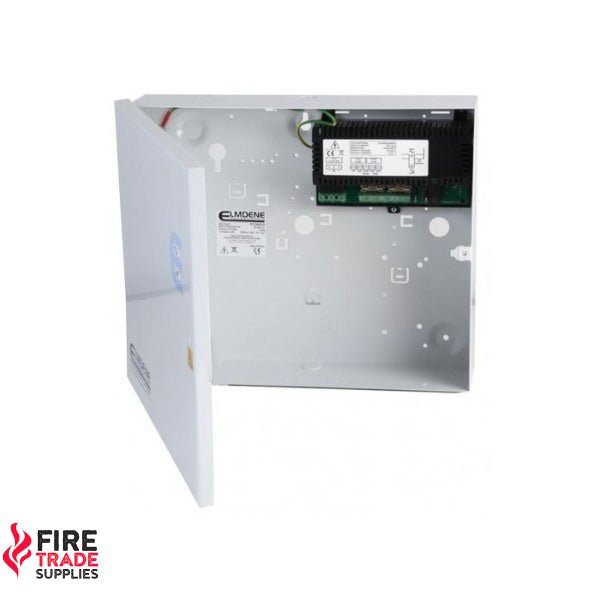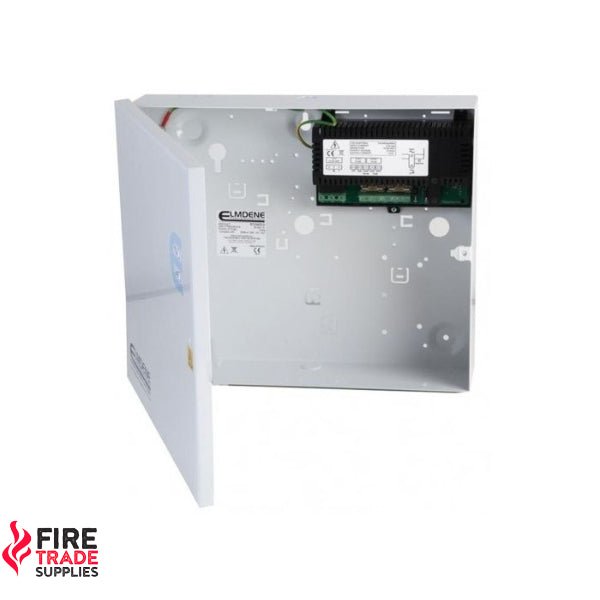
Power Supplies
2 products
Showing 1 - 2 of 2 products
What are the advantages of fire power supply?
power supplies used within the fire industry are crucial components of fire alarm systems. They provide a reliable source of power to the system's devices and ensure that the system can function properly during an emergency. In this blog post, we will discuss the advantages of fire power supplies.
1. Reliable power source
The primary advantage of fire power supplies is that they provide a reliable power source to the fire alarm system. During an emergency, it is critical that the system's devices have a steady and uninterrupted power supply. Fire power supplies are designed to provide this power, ensuring that the system can operate at full capacity.
2. EN54 Certified
Most fire power supplies are EN54 certified, which means they comply with the European standard for fire detection and alarm systems. This certification ensures that the power supplies have been thoroughly tested and meet the highest standards of quality and safety.
3. Switch Mode Power Supplies (SMPS)
Many fire power supplies use switch mode power supplies (SMPS) technology. SMPS offers several advantages over traditional transformers, including smaller size, lighter weight, and greater efficiency. This technology also generates less heat, which reduces the risk of overheating.
4. VESDA Compatible
Some fire power supplies are compatible with VESDA (Very Early Smoke Detection Apparatus) systems. VESDA is a highly sensitive smoke detector that can detect smoke at the earliest stages of a fire. Fire power supplies that are VESDA compatible ensure that the system can operate at optimal performance.
How is fire power supply used to generate electricity?
Fire power supply (PSU) is an essential component of a fire alarm system. It is used to provide a reliable source of power to fire alarm devices such as smoke detectors, fire alarms, and emergency lighting. The PSU is connected to the building's main electrical supply and provides power to the fire alarm system in the event of a power failure.
A fire power supply operates on the principle of converting AC (alternating current) electricity from the mains into DC (direct current) power that can be used by the fire alarm system. This is done using a switch-mode power supply (SMPS) that regulates the voltage and current to the required level.
The SMPS in the fire PSU consists of a transformer, rectifier, filter capacitor, and switching circuit. The transformer steps down the AC voltage to a lower level, which is then rectified to DC by the diode bridge. The filter capacitor smooths the DC voltage and removes any ripple.
The switching circuit in the SMPS controls the flow of current to maintain a constant voltage output. It works by rapidly switching the DC voltage on and off at a high frequency. This creates a series of pulses that are filtered and regulated to produce a stable DC output voltage.
Fire power supplies are designed to meet the requirements of fire alarm systems and are approved to standards such as EN54. They are available in different voltages and current ratings to suit the needs of different applications. Protec and Haes
What type of fire power supply is available?
When it comes to fire alarm systems, a reliable power supply is crucial to ensure that the system functions properly in case of an emergency. There are different types of fire power supplies available on the market, each with its own specific features and functions. Here are some of the most common types of fire power supplies:
1. Switch-mode power supply (SMPS): This type of power supply is commonly used in modern fire alarm systems. It is designed to convert AC voltage to DC voltage and is more efficient than traditional power supplies. SMPSs are available in different output voltages and current ratings.
2. Uninterruptible power supply (UPS): A UPS is a backup power supply that provides emergency power to the fire alarm system in case of a power outage. It is generally used in larger buildings or critical facilities where power outages can cause serious damage or safety risks.
3. EN54-approved power supply units: EN54 is a European standard that specifies the requirements for fire detection and alarm systems. EN54-approved power supply units (PSUs) are compliant with this standard and are designed to provide a stable power supply to the fire alarm system.
What are the different types of fire power supply available?
Fire alarm systems are a crucial part of any building's safety measures. They are designed to detect and alert occupants in case of a fire emergency. However, a fire alarm system is only effective if it has a reliable power supply. In this blog post, we will discuss the different types of fire power supply available.
1. Switch Mode Power Supply (SMPS)
SMPS is a popular type of fire power supply that converts AC voltage to DC voltage. It is energy-efficient, compact, and lightweight, making it perfect for modern fire alarm systems. SMPS is also compliant with the European EN54 standard, ensuring that it meets the highest safety and quality standards.
2. Battery Backup Power Supply
A battery backup power supply is a backup source of power that kicks in when the primary power source fails. It is essential for ensuring that a fire alarm system continues to operate during a power outage. A battery backup power supply can be integrated with a switch mode power supply to provide a reliable and power supply.
3. VESDA Power Supply
VESDA is an acronym that stands Very Early Smoke Detection Apparatus. A VESDA power supply is designed to power VDA smoke detection systems, which are highly sensitive and can detect fire outbreaks before they even start. This type of power supply is usually 24VDC and is manufactured by industry-leading brands such as Protec, Haes, and Yuasa.
Get in contact with our expert sales team here at Fire Trade Supplies to talk about all your power supply needs - [email protected]


